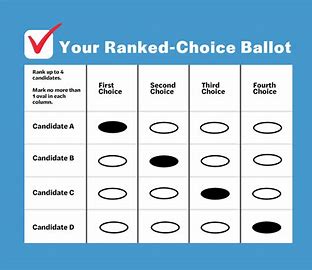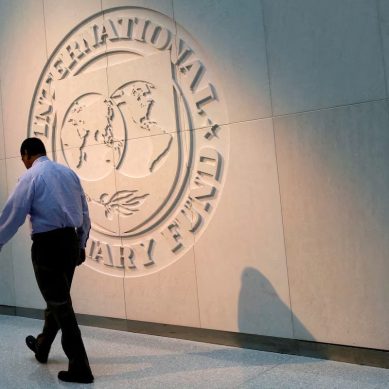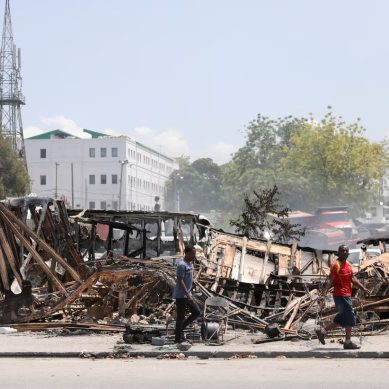
Ranked-choice voting, the option Americans are considering to heal divisions in the country, tries to produce winners who have majority support. If no one wins a majority of the vote outright, then the candidate with the lowest total is eliminated and their votes are reallocated to their supporters’ second choices.
This elimination process then repeats until someone’s vote total passes 50 per cent. Ranked-choice voting is used to refer to “instant-runoff voting.”
The elaborate ranked-choice counting process is no problem for computers; most of the major voting-machine manufacturers now offer it as an option. But there’s long been a worry that the ranked-choice approach will seem incomprehensible to the voters themselves, especially those who are poorer and less educated or members of minority groups.
If so, the reform would only end up deepening the inequities that already exist. Certainly, that charge was freely tossed around during the New York City primary campaign.
But academic studies tell a different story. In a 2019 paper comparing California cities that did and did not use ranked-choice voting, for example, political scientist Todd Donovan and his co-authors found that almost 88 per cent of the respondents still rated the instructions as “easy” or “somewhat easy.” (Slightly more older voters in the ranked-choice cities did have trouble understanding the election system.)
And more to the point, says Donovan, of Western Washington University in Bellingham, “we didn’t find any racial or ethnic differences.”
In 2021, University of Iowa political scientist Joseph Coll published similar results based on data from Alaska, Hawaii, Kansas and Wyoming, the four states that used ranked-choice voting for their 2020 Democratic presidential primaries. (They didn’t get much attention because now-President Joseph Biden was already the presumptive nominee.)
And in an exit poll from this year’s New York City primary, 95 per cent of the voters found the ballot simple to complete — and 77 per cent said they wanted to use ranked-choice voting in future elections.
A graphic depicts how votes were reallocated and candidates successively eliminated in the San Francisco mayoral vote. Rounds 5 to 9 are shown. The result was 50.55 percent of the votes going to victor London Breed. Mark Leno came close second with 49.45 percent.
This graphic explains how ranked-choice voting played out in the 2019 election for San Francisco’s mayor.
But the New York exit poll also showed that only 83 percent of the voters ranked two or more candidates. Although that number is quite a bit higher than in most other US elections using ranked-choice voting, it does illustrate another frequent criticism of the system. When voters aren’t required to rank all of the candidates (as they are for some races in Australia), their ballots can become “exhausted” and no longer count in later rounds of the tally.
And if enough ballots meet that fate, then it’s theoretically possible to produce a winner who doesn’t actually have support from a majority of voters.
It’s not clear how significant this exhausted-ballot problem is in practice. But the issue underscores how much the ranked-choice system is asking of voters: They’re supposed to form opinions about a whole list of candidates when they frequently have trouble picking even one. And it likewise underscores a broader point about ranked-choice voting. As Donovan puts it, “jurisdictions need to do some voter education to make it work.”
This was definitely a priority for Kellar’s group in Maine, both before and after their 2016 victory. “We held a whole bunch of events with our local breweries, where people could taste three or four of the beers and rank them in their order of preference,” says Kellar. “And then we would go through the rounds to see which beer would be good for the majority of people, and show the counting process in a way that people understood.” The group did similar exercises at county fairs using pizza and ice cream, and even made a video of people dressed up as ballots, moving around to show how the rounds worked.
“Somebody tries to explain ranked-choice voting to you in words and it sounds like the most complicated thing ever,” says Kellar. “But if you do it with ice cream, people realize that ranking is something that we do every day.”
Will ranked-choice voting really heal political divisions?
Maybe. Ranked-choice campaigns certainly seem less negative, according to a 2016 survey that Donovan coauthored with University of Iowa political scientists Caroline Tolbert and Kellen Gracey. And this perception of heightened civility was confirmed in a novel way this year, when political scientist Martha Kropf of the University of North Carolina at Charlotte published an analysis of Twitter comments and newspaper stories about ranked-choice contests. Kropf found that the ratio of positive to negative words in news stories was significantly higher than in regular elections.
This heightened civility, along with decreased concerns about acting as a spoiler, may in turn make ranked-choice campaigns feel more welcoming to women or minority candidates: Studies show that the system is generally not a barrier for them, and in some cases may even have boosted their chances.
Still, says Benjamin Reilly, a political scientist who studies voting systems at the University of Western Australia in Perth, the ranked-choice approach doesn’t automatically make people nicer. Even after a century of it in Australia, he says, “we have a highly adversarial system with all the usual theater of politicians shouting at each other.” There were also plenty of verbal punches thrown in Maine’s 2020 Senate campaign, and in this year’s New York primary.
- A Knowable Magazine report











